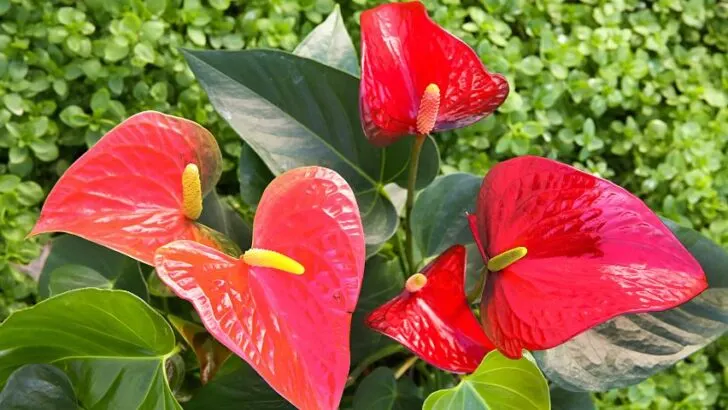What are the easiest Anthurium plants to grow? Anthuriums are often grown as indoor plants for their gorgeous foliage and blooms.
But some Anthuriums are harder to grow than others. In this article. I will write about the easiest and most difficult Anthurium plants to grow based on my experience. I have grown Anthuriums for several years now as I am a big fan of Aroid plants.
Aroids belong to the Araceae family of plants. Anthuriums are mostly epiphytes, according to The University of the West Indies. They are popular houseplants that prefer high humidity, well-draining soil, and indirect light.
Table of Contents
What Are the Easiest Anthurium? Anthuriums That are Easy to Grow
The easiest Anthuriums to grow are:
- Anthurium andraeanum
- Anthurium scherzerianum
- Anthurium clarinervium
- Anthurium crystallinum
- Anthurium magnificum
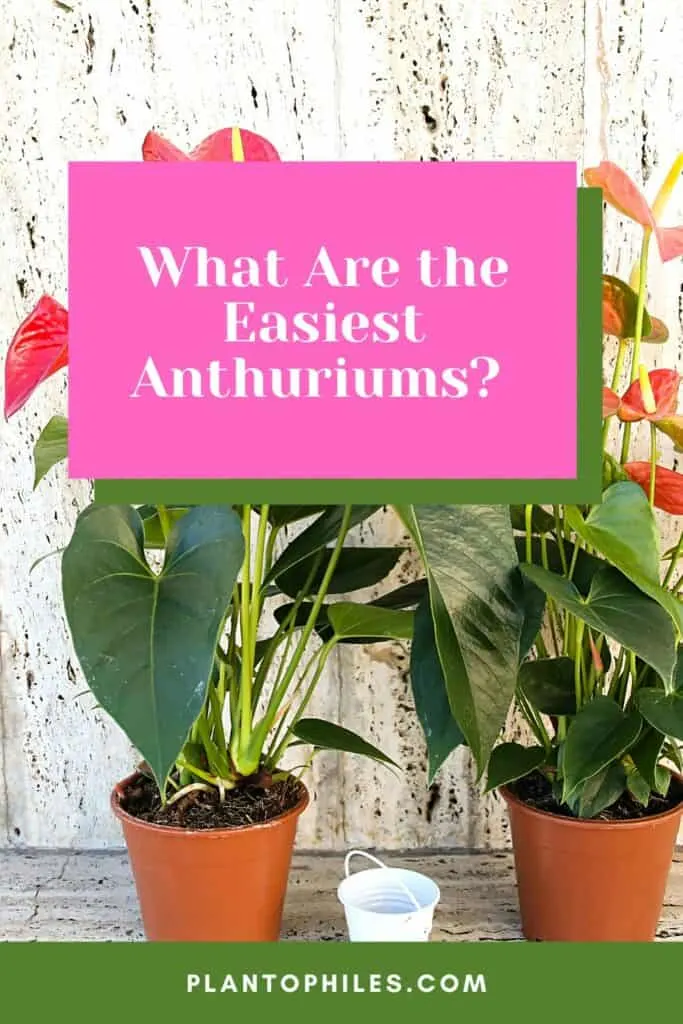
Easy Anthuriums
Easy Anthuriums will forgive you for one or two overwatering. Their needs in terms of humidity and temperature are close to other houseplants.
They are often affordable to buy and widely available. Their propagation is easy as they are not hard to pollinate.
Anthurium andreanum
The Flamingo flower or Tailflower is one of the most iconic Anthurium plants. It has heart-shaped green leaves and produces a colorful spathe and erect spadix. It blooms multiple times a year and is easy to care for.
Read more about Flamingo lily care in the Anthurium andreanum care guide.
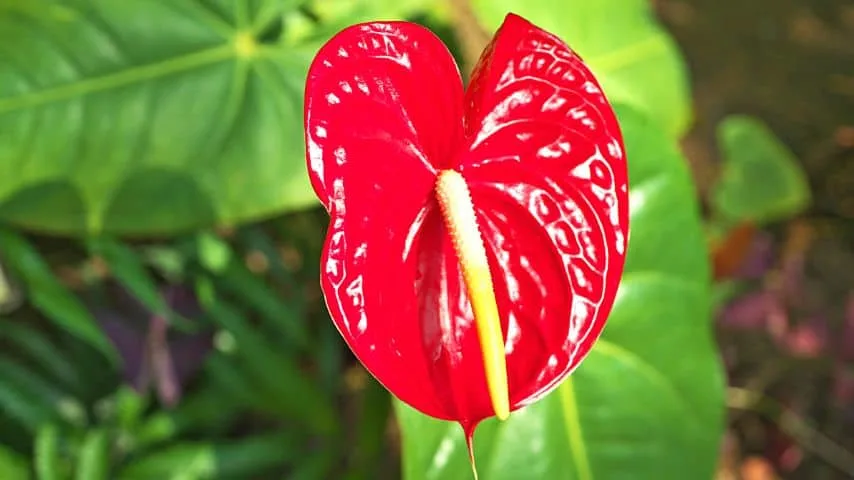
Anthurium scherzerianum
This plant is also called the small Flamingo flower. It resembles Anthurium andreanum. The main difference is the curly spadix. It also has more elongated leaves.
The Anthurium scherzerianum care article.
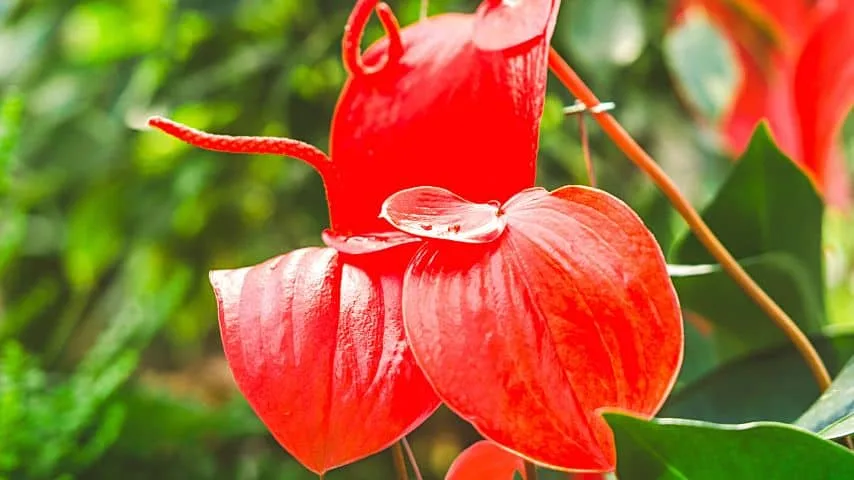
Anthurium clarinervium
Anthurium clarinervium produces large, cardboard-thick leaves and is one of the easiest Anthurium plants I have ever grown. It readily produces new leaves about once every two months and flowers multiple times a year.
Anthurium clarinevervium growing instructions.
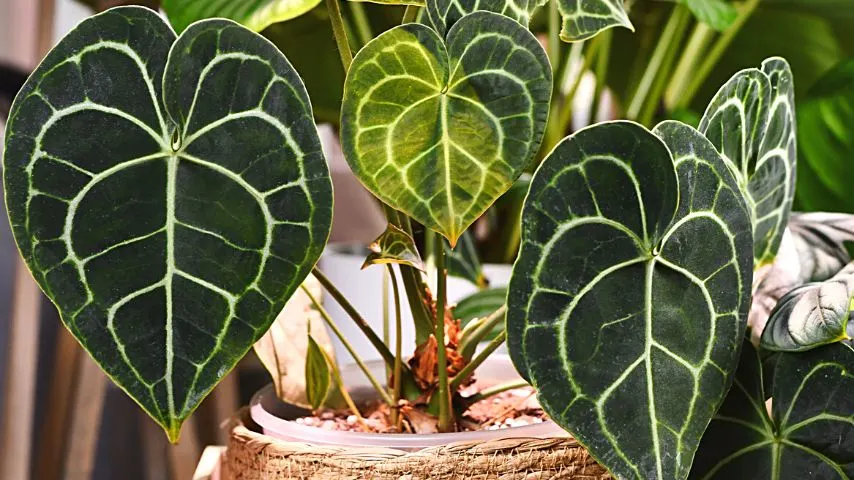
Anthurium crystallinum
Another easy-to-grow aroid plant is the Anthurium crystallinum. Prices have decreased considerably; you can now buy these for around 20-30 dollars a plant.
Anthurium crystallinum care.
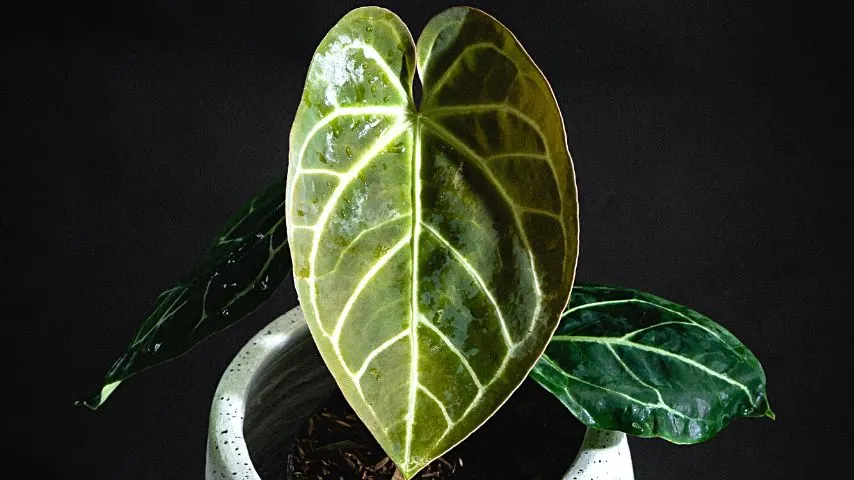
Anthurium magnificum
Anthurium magnificum is slightly more challenging to care for. But it is still an easy Anthurium plant. It produces enormous dark green leaves with white veins. The petioles can be four-sided or v-shaped.
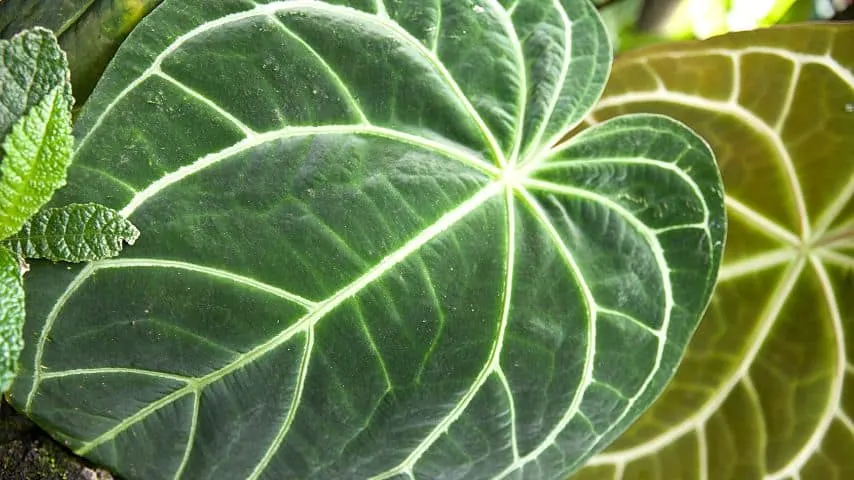
Rare And Difficult Anthuriums
Anthuriums with a velvety foliage texture and bullate leaves are often more difficult to care for. There are also a list of rare Anthuriums that fall into this category.
The reason mostly is the need for very high humidity and either warmer or colder temperatures compared to other indoor plants.
These Anthuriums are difficult to care for:
- Anthurium luxurians
- Anthurium regale
- Anthurium warocqueanum
- Anthurium forgetii
- Anthurium veitchii
- Anthurium vittarifolium
- Anthurium papillilaminum
Let’s now look at each of these plants in more detail:
Anthurium luxurians
This is a plant from Columbia. It has very dark green heart-shaped foliage. The leaves are sturdy and large. it is a very slow-growing plant. It is still a very rare plant that only expert growers dare to grow.
It is hard to grow as it requires very high humidity above 70% to thrive. Otherwise, you will end up with crispy leaves. In addition, it’s vital to have sufficient airflow. The leaves cannot stay too wet for too long.
Read more about Anthurium luxurians.

Anthurium regale
Anthurium regale produces some of the biggest heart-shaped leaves I know of. They are green, velvety, and heart-shaped. The plant you buy mostly comes with one large leaf and a big chunk.
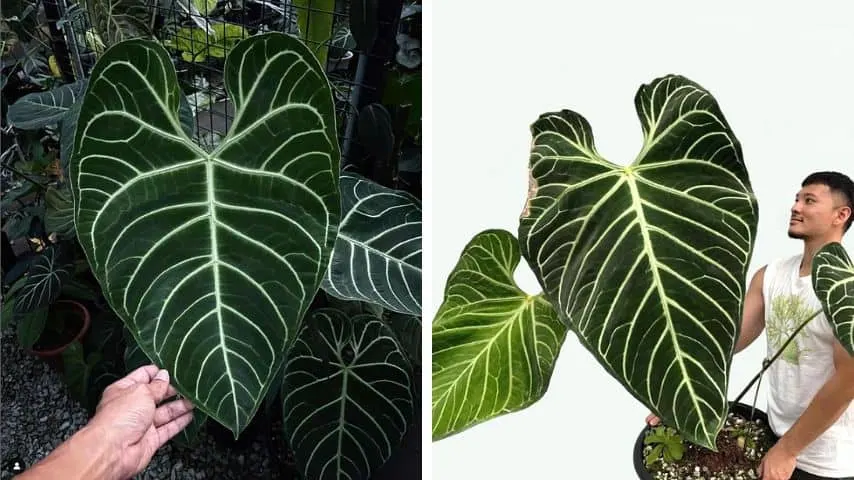
The Regale has clear white to light green veins on the adaxial side of the leaf. It produces round, sturdy petioles and develops red aerial roots.
The Regale is not easy to grow as they often come with little to no root system. You often get one chunk of stem and one leaf. It can be hard for the plant to stay sturdy as they fall and tip over easily.
Another difficulty is that their leaves are very sensitive. Even the slightest touch can damage the foliage and create brown and crispy spots. Since the leaves are so enormous visitors will be attracted to these indoor plants and can often not leave their fingers off the plant.
Anthurium regale plant overview.
Anthurium warocqueanum
This aroid is also called the King Anthurium. They produce pendent dark-green leaves. They produce velvety leaves.
The leaves are rather thick and have white veins on the leaves’ upper side. The underside is a lighter green. New leaves start small and grow bigger over 3-4 weeks. They are very flimsy initially but then harden off.
This is the case for most Anthuriums.
The hardest part of growing Anthurium warocqueanum is to manage that it holds onto its leaves. It is not rare to have a specimen with only 1-2 leaves. Whenever it grows a new leaf, it will shed an older one if the care provided is not perfect.
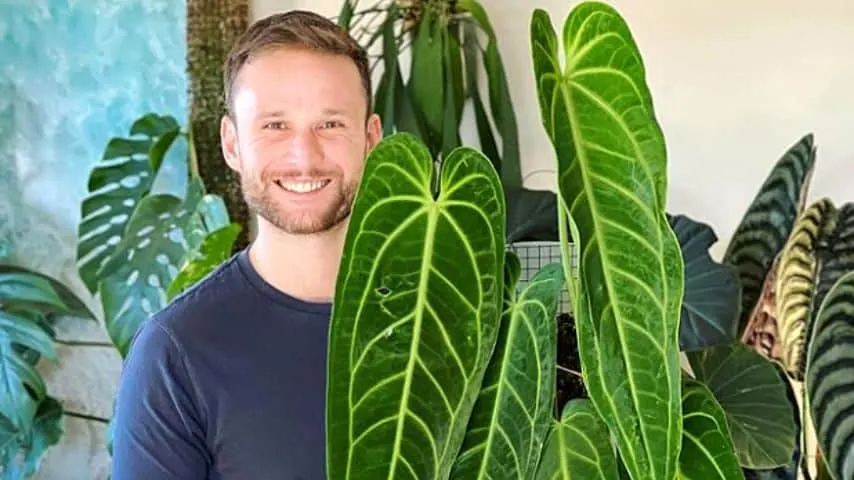
Anthurium forgetii
Anthurium forgetti has ovate leaves. They sport a pronounced white-to-grey veining.
They are native to Columbia. Forgetii is difficult to care for as they are a bit fussy regarding the right humidity, temperatures, and soil conditions.
Anthurium forgetii growing guide.
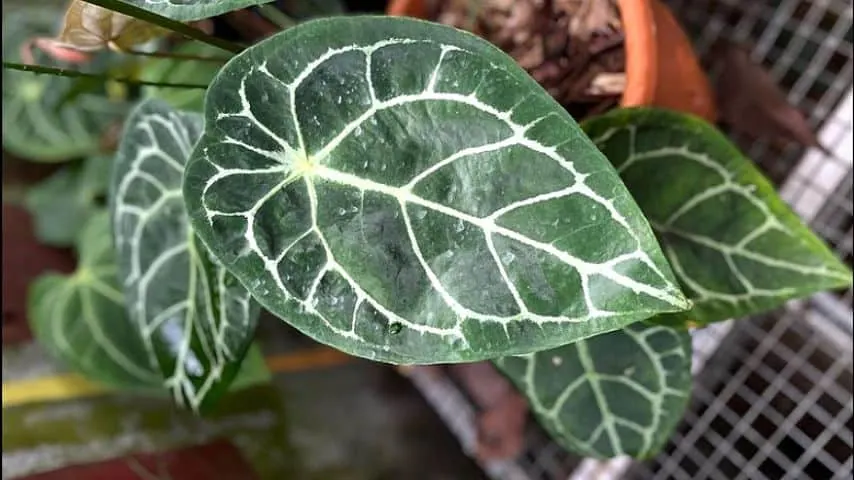
Anthurium veitchii
Anthurium veitchii is not that difficult to grow. It grows best in a hanging pot and produces hanging leaves on petioles.
The leaves are light green and ruffled. The ruffles look like abs. There is a wide and narrow form available. The narrow form is natural, and the wide cultivar is a cross (x).
Anthurium veitchii growing guide.
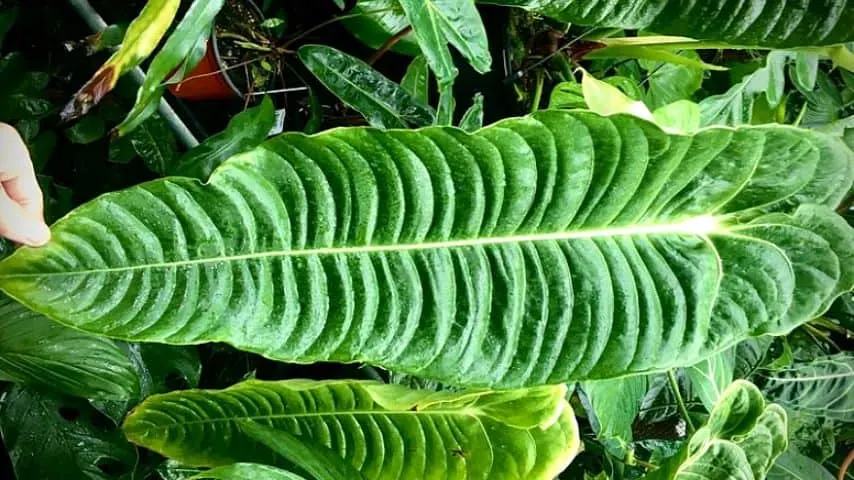
Anthurium vittarifolium
Anthurium vittarifolium is a strap-leaf plant. It grows best in hanging pots and planters. It is not easy to grow and hard to find.
It grows extremely slowly. I witnessed only one new leaf in the growing season on my specimen. It originates from South America.
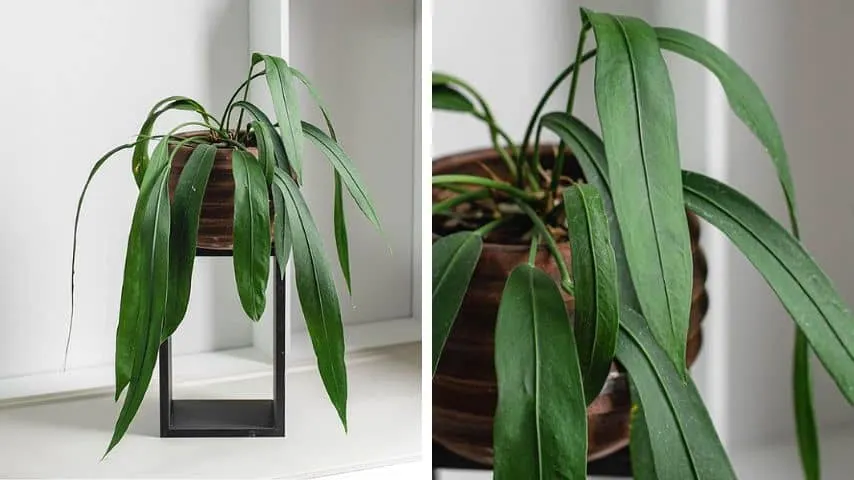
Anthurium papillilaminum
This Anthurium is expensive to buy and very difficult to find. There are hardly any pure Anthurium papillilaminum available as the most sold specimen are crosses. It’s one of the rarest Anthuriums in the world. This Anthurium has elongated heart-shaped deep green leaves.
Anthurium papillilaminum growing guide.
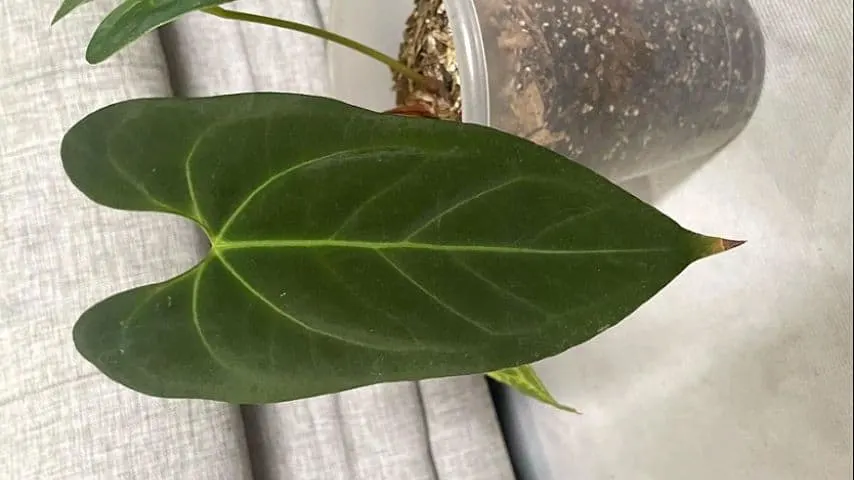
Beautiful Anthurium Varieties
Some of the most beautiful Anthurium varieties are:
- Anthurium andraeanum
- Anthurium luxurians
- Anthurium regale
For a list of more than 40 Anthurium varieties, you can refer to this overview.
Anthurium Care
Here is how you care for Anthurium houseplants. Rare Anthurium plants often need high humidity levels. A lot of Anthuriums are epiphytes.

The growing conditions are influenced by where the anthuriums grow in their natural habitats. Some specimens grow in high altitudes and cooler temperatures. Others grow in lower tropical forests.
With proper care, you can avoid issues such as root rot. Tropical plants need loose well-draining soil and ample humidity.
Choose the location in your home wisely. Usually, an eastern– or western-facing window is preferred.
Light
Bright indirect light. Direct sunlight is too intense and can burn the flowers and leaves.
Temperature
The ideal temperature is 77-92°F (25-32°C).
Humidity
Anthuriums need humidity between 70-90% to thrive. Anthurium plants tolerate lower humidity, around 50% but will not thrive.
Soil
Provide well-draining soil. A mix between orchid bark, charcoal, perlite, and some potting mix works great. An alternative for perlite is vermiculite and also use peat moss.
You can also grow most Anthurium in 100% Sphagnum moss or leca.

Water
Water once a week. It would help if you watered more in summer and winter. The lower the temperatures and the less light a plant gets, the less water is needed. The potting soil also influences how often you have to water.
Water your anthurium only once the soil’s about to dry up. Soggy soil leads to rotting roots. Anthuriums are highly susceptible to root rot.
Repotting
Repot about once a year when these indoor plants become either root or pot-bound.
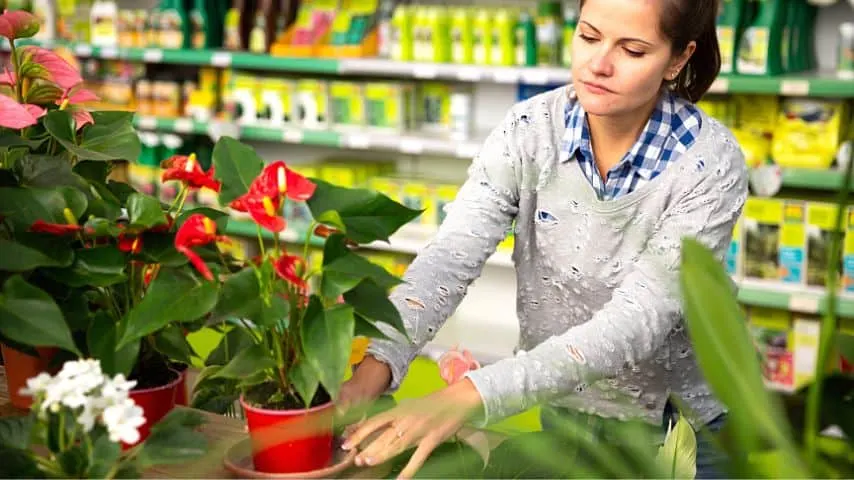
Fertilizer
Fertilize anthuriums once a month in spring and summer. This is during the main growing season.
Reduce or refrain from fertilizing in autumn and winter.
Propagation
Anthuriums can be propagated from stem cuttings, by division and seeds.
The full Anthurium growing guide can be found here.

Daniel has been a plant enthusiast for over 20 years. He owns hundreds of houseplants and prepares for the chili growing seasons yearly with great anticipation. His favorite plants are plant species in the Araceae family, such as Monstera, Philodendron, and Anthurium. He also loves gardening and is growing hot peppers, tomatoes, and many more vegetables.

